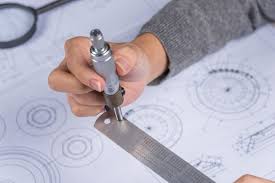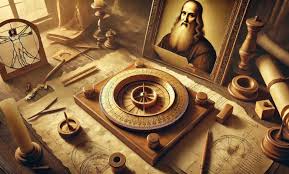Table of Contents
Introduction to the bussola to measure angles within a circle

Imagine a world where navigating uncharted waters became as easy as measuring angles within a circle. Enter the Bussola, an ingenious invention that revolutionized navigation and geometry. At the coronary heart of this ancient surprise is none besides Leonardo da Vinci, a true genius who transformed how we apprehend direction and angles.
The Bussola is more than a tool; it bridges artwork and technology, reflecting Da Vinci’s boundless curiosity and innovative spirit. As we explore its motive, creation, and lasting effect on modern-day navigation and era, you will find out why this extraordinary device continues to seize imaginations nowadays. Let’s embark on this charming adventure through time!
The Purpose and Function of a Bussola
The Bussola serves an essential role in appropriately measuring angles within a circle. This imaginative device lets navigators, engineers, and mathematicians decide on specific bearings and instructions.
Crafted with a simple yet effective layout, the bussola has a rotating arm or pointer that aligns with the desired angle. Users can easily examine measurements against graduated arcs marked on its base.
This functionality is essential for numerous packages, from maritime navigation to architectural planning. Providing dependable angle readings enhances decision-making techniques throughout more than one discipline.
Moreover, the Bussola promotes efficiency in responsibilities requiring unique alignments. Its ability to degree angular relationships makes it necessary in astronomy and surveying.
As technology evolves, the fundamental purpose of this tool remains unchanged: allowing accurate size of angles within circles for practical programs worldwide.
How Leonardo da Vinci created the Bussola
Leonardo da Vinci’s genius wasn’t limited to portray on my own. His inquisitive mind also delved into the geographical regions of science and engineering. Among his splendid innovations was the Bussola, a device designed to measure angles within a circle.
Da Vinci observed the need for unique angular measurements in various fields, from navigation to structure. His information on geometry encouraged his design choices profoundly.
He meticulously crafted this device to use with easy substances, ensuring it becomes useful and efficient. Incorporating a pivot factor allowed for clean movement, making it consumer-pleasant.
The beauty of the Bussola lies in its simplicity and sophistication—attributes that outline many of Da Vinci’s paintings. He refined its mechanics through sketches and experiments until it fulfilled his visionary standards. This modern spirit continues to inspire countless inventors today.
Advancements in Navigation Thanks to the Bussola
The creation of the bussola revolutionized navigation. Mariners may now want to decide their course with unmatched precision. This invention changed into a recreation-changer on treacherous seas.
Before the bussola, sailors depended on guesswork and intuition. The hazard of having misplaced or encountering risky waters became ever-gift. With this device, navigators gained the confidence to explore uncharted territories.
As accuracy advanced, change routes multiplied substantially. Ships ventured farther than ever earlier, connecting distant lands and cultures. The capacity to degree angles inside a circle opened new possibilities for sea journeys.
Navigational charts also developed along the bussola’s impact. Map-making has become more precise as explorers document their journeys in elements. These improvements laid the foundation for modern-day navigation strategies that we rely on nowadays.
In essence, the bussola didn’t just help sailors; it always converted international trade and exploration.
Modern Uses for the Bussola
The Bussola has transcended its ancient roots, locating relevance in diverse present-day packages. Navigators and explorers depend on this device for precise perspective dimensions, even when charting unknown territories. Its consumer-pleasant layout makes it imperative in outdoor sports like hiking and sailing.
In structure, engineers utilize the bussola to make certain correct angles while designing structures. This precision maintains stability and aesthetics, proving important in production initiatives.
Education additionally blessings from the bussola. Students examine geometry principles via hands-on experience with this instrument, making summary thoughts extra tangible.
Moreover, artists incorporate the bussola into their work to easily reap symmetrical designs or geometric patterns. It serves as a bridge between artwork and technology, showcasing its versatility across disciplines.
With advancements in a generation, digital variations of the Bussola are emerging, too. Apps enable users to measure angles fast with only a cellphone—an evolution preserving the spirit of Leonardo da Vinci’s genius.
Impact on Modern Science and Technology
In determining angles within a circle, the Bussola has had a long way to attain results in cutting-edge technology and generation. Its precision tools laid the basis for advancements in various fields, which include engineering and astronomy.
Today, navigational devices still depend upon standards mounted using this amazing invention. From GPS structures to drone navigation, the fundamental concept of measuring angles remains important.
Furthermore, its impact extends into pc pix and robotics. Algorithms that simulate motion or rotation regularly use angle measurements in the authentic bussola layout.
Educationally, it serves as a sensible instance in physics classes internationally. Students learn about geometry while appreciating Leonardo da Vinci’s contributions through arms-on reviews and perspective measurement.
The legacy of the bussola continues to encourage innovation across disciplines, showcasing how historical innovations can form modern-day answers for complex troubles.
Conclusion
The Bussola to degree angles within a circle have left an indelible mark on diverse fields. Its invention using Leonardo da Vinci converted navigation, permitting explorers to traverse uncharted waters with self-belief. The precision and efficiency afforded via this tool advanced maritime exploration and laid the groundwork for contemporary clinical practices.
Today, the concepts in the back of the Bussola are preserved to play an essential role in generation and engineering. From sophisticated surveying systems to regular compasses used in out-of-door sports, its effect is a long way gaining.
Leonardo’s brilliance resonates through time, reminding us of ways innovation can form our knowledge of the world. By exploring angles with such ingenuity, he paved the way for destiny improvements that we nevertheless benefit from today.
FAQs:
Q: What is the Bussola used for?
A: The Bussola measures angles within a circle for navigation, architecture, and geometry.
Q: Who invented the Bussola to measure angles within a circle?
A: Leonardo da Vinci invented the Bussola to measure angles within a circle.
Q: How does the Bussola help in navigation?
A: The Bussola helps navigators measure precise angles within a circle, improving accuracy and confidence at sea.
Q: Why is the Bussola important in geometry?
A: The Bussola is important in geometry as it simplifies measuring angles within a circle for various applications.
Q: Can the Bussola to measure angles within a circle still be used today?
A: The Bussola is still relevant today, with both traditional and digital versions available for precise measurements.
Q: What makes the Bussola unique?
A: The Bussola is unique because it combines simplicity and precision to effectively measure angles within a circle.
Q: How did Leonardo da Vinci design the Bussola?
A: Leonardo da Vinci designed the Bussola with a rotating arm and graduated arcs to measure angles within a circle.
Q: What are modern uses of the Bussola to measure angles within a circle?
A: Modern uses include navigation, architectural planning, and teaching geometry concepts.
Q: How has the Bussola influenced modern tools?
A: The Bussola laid the foundation for modern tools that measure angles within a circle, like GPS devices and surveying instruments.
Q: What fields benefit from the Bussola when measuring angles within a circle?
A: Fields like navigation, engineering, astronomy, and education benefit from the Bussola’s precision.
